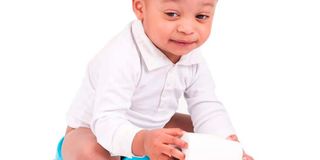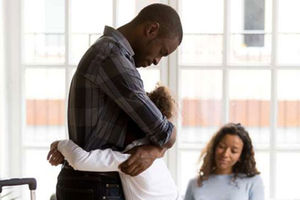Helping your preschooler cope with spina bifida

To avoid constipation in your child, give them foods that have fibre, like fruits and vegetables.
What you need to know:
- A child with a birth defect might require help to accomplish certain tasks.
- You must balance your support if you are to give them independence and confidence while caring enough not to overwhelm them with things they aren’t able to do.
- According to the CDC, how your child moves around will largely depend on the type of spina bifida they have and how severe it is.
It can be hard for your preschooler to develop independence if they have spina bifida. However, there are ways you can help them to cope and develop independence in their early childhood. This will go a long way in nurturing their childhood development as well as self-reliance later in life.
Independence and decision making
According to child therapist Monica Ndirangu, a child with a birth defect might require help to accomplish certain tasks. However, before you extend help, give the child an opportunity to attempt and complete their task. This means only giving help on tasks that require help, and not on every task the child undertakes. “You must balance your support if you are to give them independence and confidence while caring enough not to overwhelm them with things they aren’t able to do,” says Ndirangu. She cautions against breathing down their neck in a bid to urge them to firm up like other kids. “Whereas the challenges of raising a child who needs extra special care can be emotionally overwhelming, bear their level of comprehension and emotional understanding in mind,” she says.
This is echoed by the Centre for Disease Control (CDC). According to the CDC, things you can do to encourage your child to be more active and independent include
- Teach your child about their body and about spina bifida.
- Encouraging your child to make their own choices. Begin with simple things such as choosing between two items of clothing.
- Ask your child to help with simple daily tasks, such as putting away toys. This will also teach them about responsibility.
Physical activities
According to the CDC, how your child moves around will largely depend on the type of spina bifida they have and how severe it is. The means of moving around may include walking without any assistance or walking aids, walking with crutches or baby walkers, using wheelchairs, and walking with braces. “Children with spina bifida higher on the spine (near the head) might have paralysed legs and use wheelchairs. Children with spina bifida lower on the spine (near the hips) might have more use of their legs and use crutches, braces, or walkers. They might also be able to walk without these walking aids,” the CDC states. In most cases, you may need to involve the help of a qualified physical therapist to help monitor your child’s movements. “This will foster a level of independence through simple physical exercises that will stimulate their legs and increase strength and flexibility,” the CDC explains.
Types of exercises your child can do include
- Walks in the neighborhood.
- Active plays with friends
- Visits to recreational areas that are a friend to persons with disabilities.
- Exercises recommended by a qualified and licensed physical therapist.
These physical activities must be cognizant of your child’s young age. According to Ndirangu, the exercises should be within the early intervention physiotherapy category. “These exercises are not supposed to be vigorous and tiring to a preschooler. They are meant to help the child develop strength, movement, and balance skills,” she says.
Bathroom schedule
Develop a bathroom schedule and care routine for your child from an early stage. This is because children with spina bifida are not always able to control when they want to relieve themselves. “Children with spina bifida are also at an increased risk of developing urinary tract infections,” says the CDC. “Develop a plan that puts them into a bathroom routine. This routine will come in handy when they started attending school. The child will have higher chances of attaining bathroom independence when supported this way.” The CDC also says that you might want to consult a nutritionist to find out if a change in diet could help them maintain regular bowel movements.
The diet
According to clinical nutritionist Angela Wali, the diet you give your baby will also go a long way in helping them cope with spina bifida. She recommends giving your child meals at specific times. You should also introduce them to healthier options as soon as they start to take solid food. Avoid giving them high-calorie foods that can result in unhealthy weight. To avoid constipation in your child, give them foods that have fibre, like fruits and vegetables and wholemeal starches. According to Wali, this will help in exercising intestine muscles, while providing bulk in the diet to improve bowel movement. At the same time, a diet that is rich in fruits and vegetables will give your child the necessary Vitamins A and C that help in wound prevention and wound healing. “Three to four servings of dairy every day will give enough calcium for osteoporosis prevention. Physical exercise will also be beneficial,” she says.





